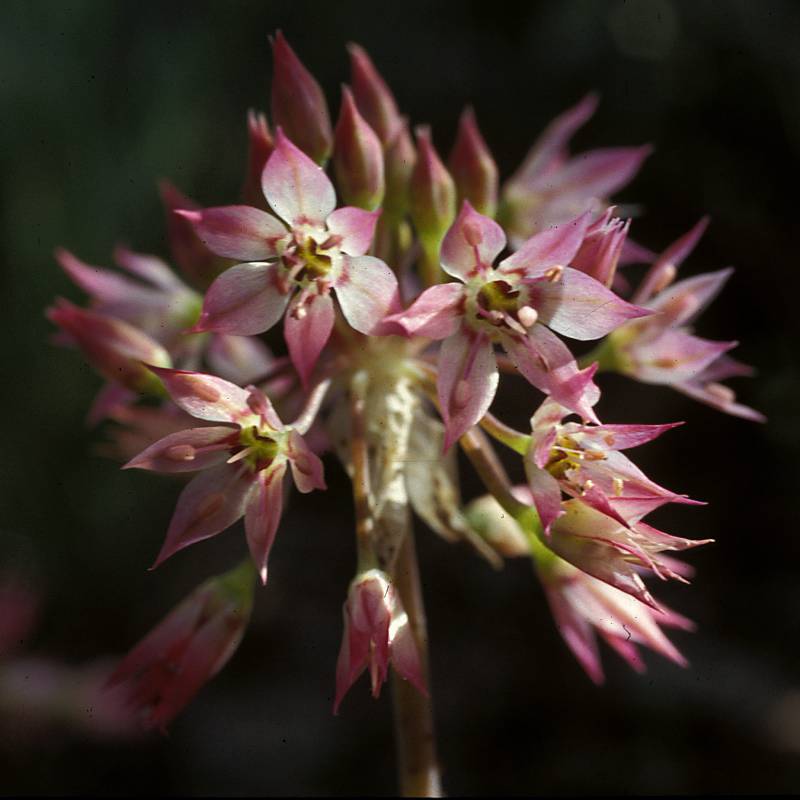Allium triquetrum
Allium campanulatum
rosy Sierra onion
Leaves usually 2, concave-convex, less than 5 mm. broad, about equal to the scape, withering at flowering;
scape usually less than 1.5 dm. tall, cylindrical, usually solitary.
Umbel few- to many-flowered, the pedicels up to 4 times the length of the tepals, becoming strongly deflexed in fruit;
tepals usually 7-8 mm. long, ovate to narrowly lanceolate, acuminate, entire, purplish to pinkish or white, the tips with a strong keel;
stamens 6, shorter than the tepals;
stigma capitate.
Capsule 3-celled, 6-seeded, conspicuously crested with 6 flattened processes.
Allium triquetrum
Allium campanulatum
Occurring east of the Cascades crest where known from Yakima County in Washington; Washington to California, east to Nevada.


